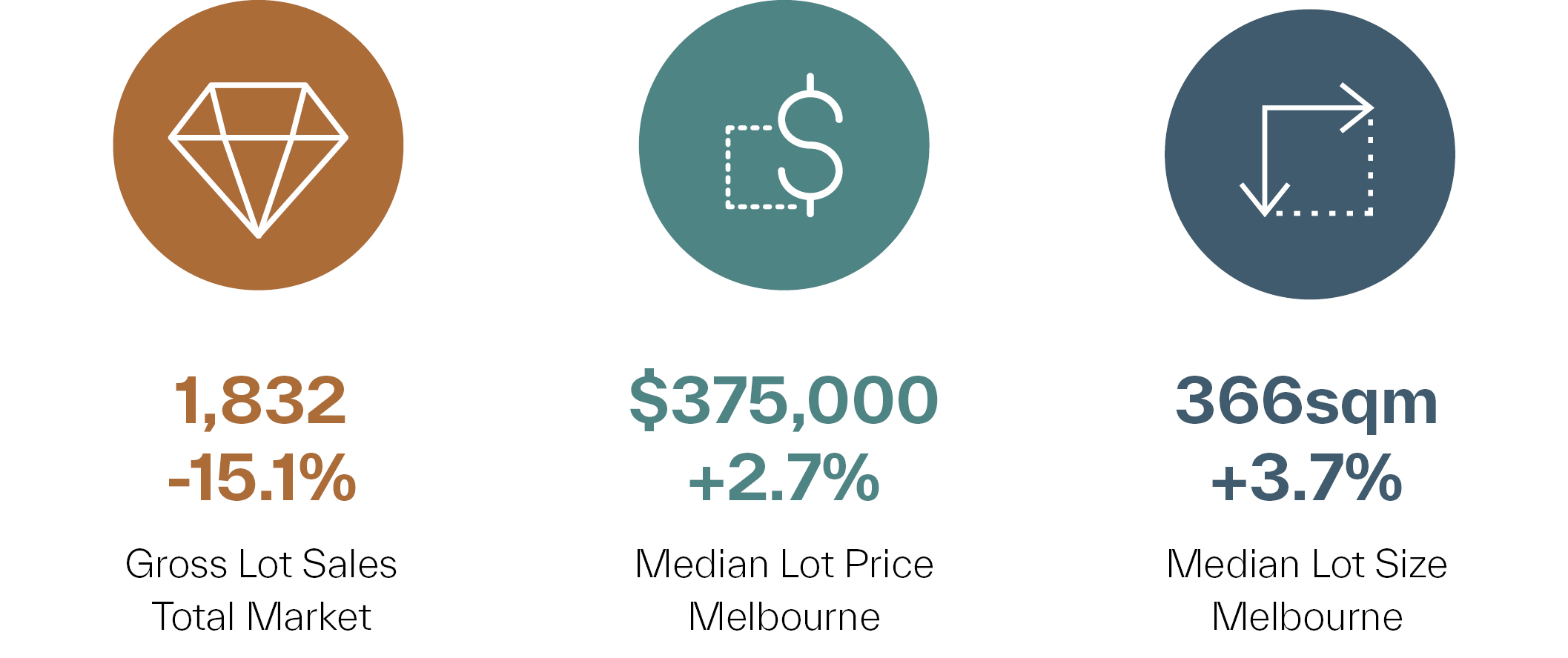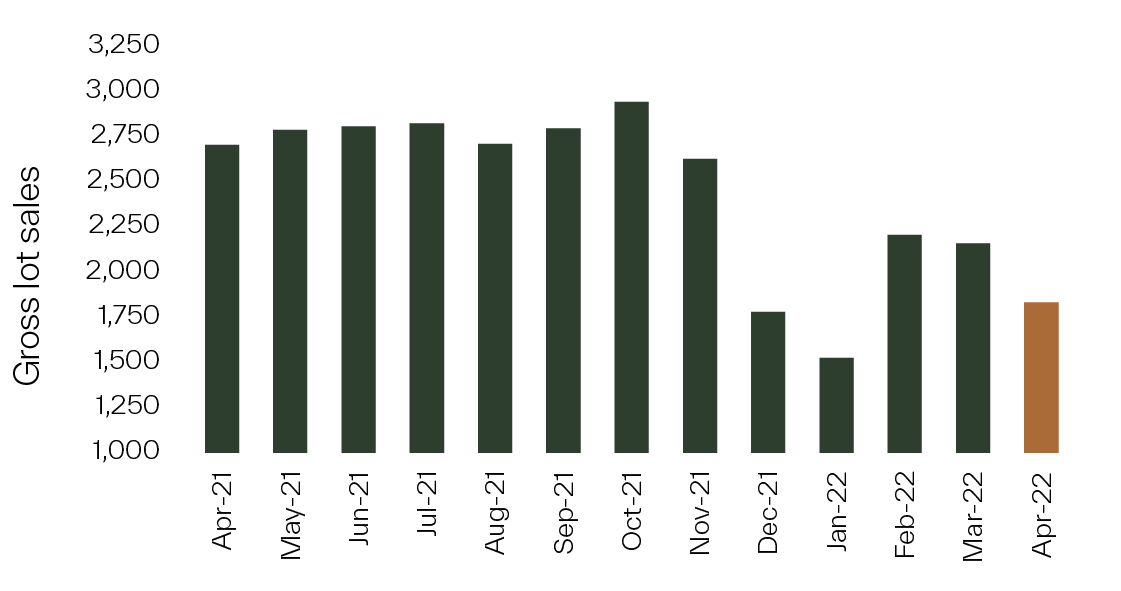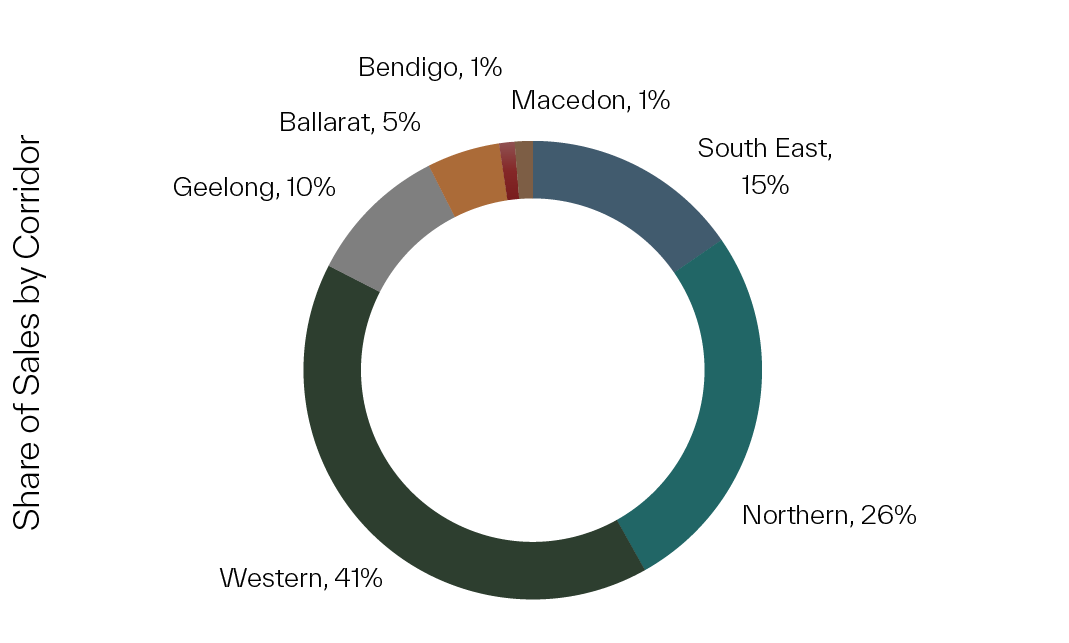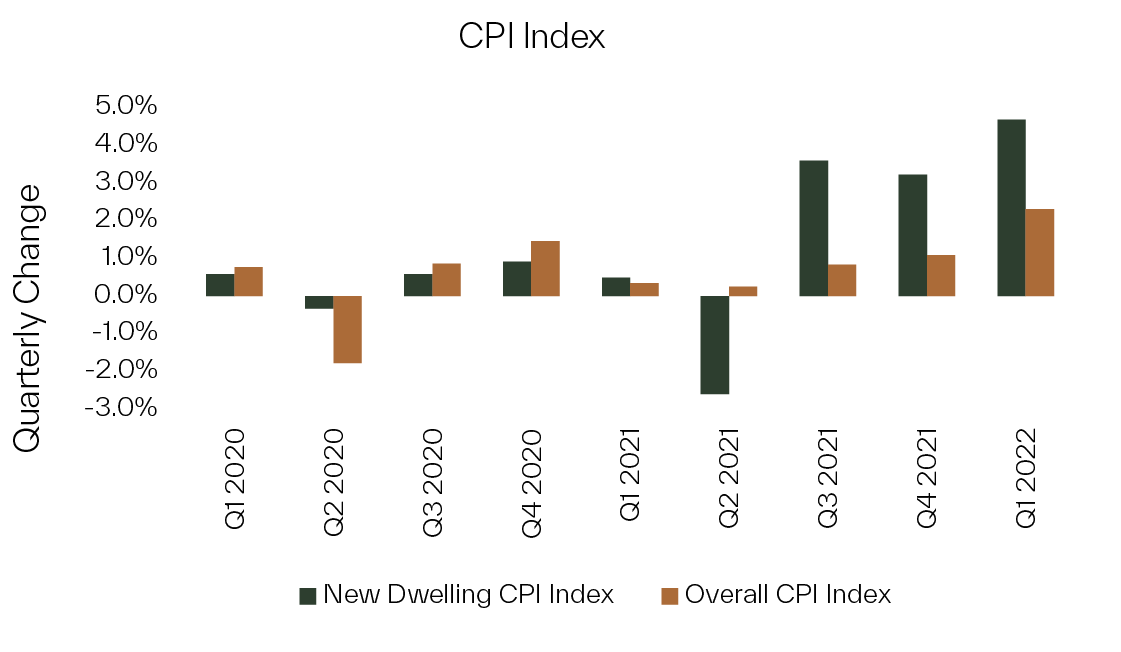Lot size movements dictate price changes
Melbourne’s median lot price increased 2.7% to a new monthly peak value of $375,000, although this was attributed to the greater 3.7% rise in the median lot size to 366sqm. In Geelong, a 12.5% reduction in its median lot size to 392sqm led to a greater 14.3% correction in its median lot price to $381,950. Subsequently, the median price per sqm declined across Melbourne and Geelong. Buyers are likely becoming more price-conscious, further evidenced by the median lot size being relatively small for Melbourne, and at a record low for Geelong.

Sales activity moderates further
The monthly decline in vacant lot demand continued in April, after the growth areas of Melbourne, Geelong, Ballarat, Bendigo, and Macedon recorded 1,832 gross lot sales. The new home market has entered a cyclical downturn stage, so a moderation in sales activity is expected, particularly after record demand through 2021. This was likely exacerbated by the seasonal school holiday period, encompassing consecutive long weekends for Easter and Anzac Day. High inflation and resulting increases to the official cash rate is also likely to put a dampener on enquiry and sales.

Sales concentration shifts to western corridor
The Western growth corridor experienced the smallest monthly decrease in sales activity of 5% over April, resulting in its proportion of total gross lot sales increasing to 41% (+5%), while the Northern growth corridor maintained its share at slightly above one quarter. Monthly falls in sales were greatest among regional growth areas, leading to the share of gross sales in Ballarat, Bendigo and Macedon all edging lower.

Construction costs a major contributor to strong inflation
Melbourne’s CPI Index for new dwellings purchased by owner occupiers has risen strongly over the last three quarters, up 4.7% in Q1 2022. This is double the overall Melbourne CPI Index of 2.3%. Factors in play include; the waning influence of HomeBuilder, current high demand for residential construction materials, global supply chain disruptions and increasing cost of labour.


